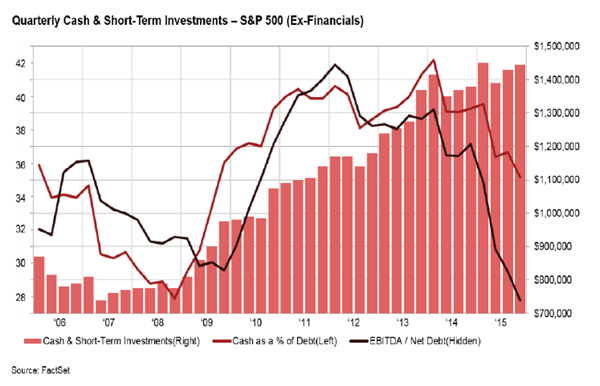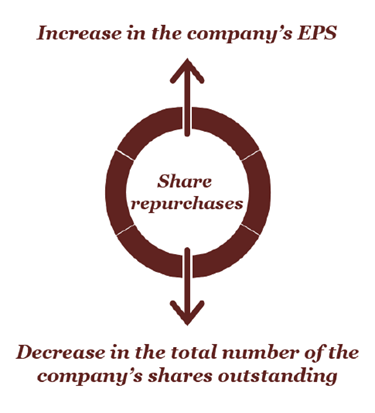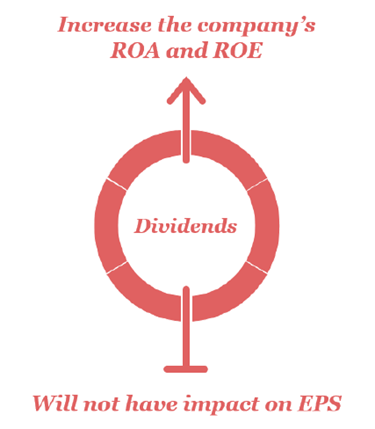Activist Investors, Cash, and Capital Allocation
Posted by Paula Loop,
PricewaterhouseCoopers LLP, on Thursday, March 24, 2016
US companies are holding record sums of
cash on their balance sheets. In fact, the total cash balance of S&P
500 companies was $1.45 trillion at the end of the third quarter of
2015, representing a 5.8% increase year-over-year. While this
phenomenon indicates robust balance sheet health, it also raises
questions about the best way to use this liquidity. And these
challenges stimulate provocative questions and discussions about the
most prudent use of company resources—taking into account different
stakeholders’ expectations, the company’s individual circumstances,
and the overall economic environment. Ultimately, companies need an
effective capital allocation strategy that is well thought-out, linked
to their overall strategy, and clearly communicated. And a key element
of this capital allocation strategy is whether, and/or how, cash is
returned to shareholders.
At the same
time, shareholder activism has shifted into high gear. With about $173
billion currently under activist management, proxy contests are more
frequent—as are settlements. Activists’ strategies often involve
pressuring companies to take one or more of several actions: increase
share repurchases, increase dividends, restructure, spin-off a
division, or even sell the company. In many of these areas, including
increasing share repurchases and dividends, activists have been
effective in achieving their goals.
Between 2003
and 2013, S&P 500 companies doubled their spending on share
repurchases and dividends while cutting their spending on investments
in new plants and equipment.
[1]
Companies targeted by activists increased spending on share
repurchases and dividends to an average of 37% of operating cash flow
in the first year after being approached—from 22% the year prior. This
trend has been partly fueled by the low-interest-rate
environment—enabling companies to borrow money cheaply to finance
their share repurchase and dividend programs. So in the face of
pressure to boost short-term performance, how should directors and
shareholders be thinking about the impact share repurchases and
dividends may have on the company’s ability to create long-term value?
A
complicating factor for executives and boards is that shareholders are
not monolithic. While both activist hedge funds and state pension
funds seek a return on investment, they likely employ very different
investing time horizons to achieve those returns. They may also have
vastly different views about the viability of a particular company’s
strategy. Directors need to be prepared to pose tough questions to
executives about the virtues of long- and short-term capital
allocation strategies. Similarly, investors need to make informed
investment and proxy voting decisions based on the interests of their
specific constituencies—resisting any urge to follow the lead of those
with a different focus.
Share repurchases
One reason
companies adopt board-authorized share repurchase plans is that they
perceive their shares to be undervalued by the market and want to
signal management’s confidence in the company’s future prospects. By
repurchasing shares, the company buys its own stock and reduces the
total number of its shares outstanding. Because the denominator is
lower, the same earnings will increase the company’s earnings per
share (EPS). Share repurchases are also a way to offset the dilutive
impact of shares issued in acquisitions. Or those treasury shares can
be issued to satisfy the equity component of acquisitions or mergers.
Repurchased shares can also be used to satisfy the shares needed upon
exercise of employee stock options. The effect of these actions can
allow a company to remunerate employees at a higher level by issuing
more stock options without increasing the number of outstanding
shares.
Executives
sometimes prefer share repurchases to dividends because they generally
require less of a long-term commitment and provide more flexibility.
For example, a company may delay or defer an announced plan to
repurchase its shares due to unexpected capital needs or changes in
stock price. While not ideal, there is generally less negative market
reaction to this outcome than there would be to cutting a regular
dividend.
There are
several different approaches to share repurchases:
-
Open market repurchases. The vast majority of share
repurchases are on the open market. The manner, timing, volume, and
price of these repurchases are governed by detailed rules set forth
in the Securities and Exchange Act. In these transactions, companies
usually enter into an agreement with a broker or dealer that
executes the repurchases according to the companies’ instructions.
-
Tender offers. A tender offer is a public offer to
shareholders to tender their shares for sale at a specified price
during a specified time, subject to the tendering of a minimum and
maximum number of shares. This can be done at a fixed price or at a
range of prices for a set amount of shares. A company may be more
inclined to initiate a tender offer in order to repurchase a large
number of its shares at one time.
-
Privately-negotiated repurchases. A company can also decide
to enter into share repurchase agreements with individual
shareholders. This approach is often used when companies want to
repurchase a significant number of their shares from a small number
of individual investors.
-
Accelerated share repurchase programs. These are types of
economic hedges that allow, for a fee, a company to purchase a
specific number of shares immediately with the final purchase price
determined by an average market price over a specified future
period. If the average price is higher at the end of the program,
the company returns the necessary number of net shares to cover the
shortfall. If the share price is lower, the bank delivers more
shares. This approach combines the immediate share retirement
benefits of a tender offer with the market impact and pricing
benefits of an open market repurchase program. However, these
transactions are sometimes off-balance-sheet and while they can have
a large upside if the shares appreciate, there are also potential
risks. Fluctuations in the company’s stock price during the
specified period can have a significant economic benefit, or cost,
to the company. Companies can find themselves underwater on these
contracts if the share price declines. And some critics question
whether these practices amount to a company ‘betting’ on its own
stock.
Share
repurchases can also provide investors with tax advantages when
compared to other forms of cash distributions, such as dividends.
Dividend distributions are subject to capital gains taxes. By
contrast, share repurchases don’t result in a direct distribution, and
taxes are generally deferred until shareholders choose to sell their
shares.
It’s
particularly important for directors and shareholders to understand
the effect of share repurchases on some of the company’s key
performance metrics—as improved ratios can impact executive
compensation tied to such metrics. For example, many executive
compensation plans are linked to EPS—which increases by repurchasing
shares. This can potentially give executives a better chance of
reaching bonus targets tied to that measure. Executives also stand to
gain if the company’s share repurchases drive the stock price to a
level that makes the exercise of their stock options economically
beneficial. As a result, some critics of share repurchasing argue that
executives’ self-interest is in conflict with their authority to make
decisions on making repurchases.
It is also
important to assess the appropriateness of the company’s equity and
debt structure. Using cash to repurchase shares can put pressure on
debt-to-equity ratios and adversely impact a company’s credit rating.
Another
consideration for using cash to repurchase shares is that much of that
cash may be held in foreign jurisdictions and subject to US taxes upon
return of the money to the US (repatriation). The optics of the
balance sheet indicate the cash is liquid and available, but a
reduction for potential repatriation taxes may not be reflected other
than in the footnotes if the foreign cash is considered “permanently
reinvested” in the particular jurisdiction. A decision to bring cash
home may trigger additional tax expense, thereby reducing what would
otherwise appear as cash available for repurchases.
Dividends
Issuing a
dividend is another way for companies to return cash to shareholders.
A dividend is a cash distribution of the company’s assets, paid on a
periodic basis (generally quarterly, annually, or in special
circumstances). As of the end of the third quarter of 2015, 85% of S&P
500 companies paid a regular quarterly dividend, and 63% had raised
their dividend from the previous quarter. Aggregate S&P 500 dividend
payments amounted to $103.3 billion during the third quarter of 2015,
and $410.8 billion over the trailing twelve months.
[2] Both
numbers represented ten-year highs.
Similar to
share repurchases, dividends are viewed by the markets as a signal of
management’s confidence in the company’s future prospects and
financial liquidity. The payment of a dividend will reduce the amount
of cash and thus, total assets, on the balance sheet. Because of this,
a company’s return on assets ratio (ROA) is enhanced over what it
would be absent the payment of the dividend. It will similarly
increase the return on equity ratio (ROE), but earnings per share is
unchanged. As with share repurchases, it is important for directors to
understand how improved ratios might impact triggers for the payment
of executive compensation. The achievement of performance targets
related to these two enhanced metrics may make bonuses more attainable
if dividends are initiated or increased. The reverse may be true if
dividends are stopped or reduced. Revisions to the dividend policy
that were not anticipated in defining the original compensation
program should be carefully considered.
A company’s
decision to pay a dividend should be supported by many of the same
considerations as a stock repurchase. Specifically, directors and
shareholders should understand whether this use of cash is consistent
with a reasoned cash allocation strategy. A decision to issue or
modify a dividend payment speaks to whether the company believes it
can maintain that dividend in the future. Decisions around paying
regular dividends are particularly important because the market
expectation is usually that the company will continue to pay out the
existing dividend. In fact, there is frequently an expectation that
the company will raise its dividend periodically. Such dividend
increases are viewed by many investors as even stronger forms of
assurance that management believes the company has the ability to
generate adequate cash to service the enhanced dividend commitments.
Conversely, markets generally have a negative reaction to stagnant or
reduced dividends.
While the
majority of S&P 500 companies issue regular quarterly dividends, some
companies may choose to utilize a “special dividend”—a one-time cash
distribution, separate from the regular dividend cycle. One of the
benefits of special dividends is that companies can choose to pay them
at their discretion without incurring the perceived longer-term
commitment that accompanies a regular dividend.
The debt
leverage and earnings repatriation considerations relevant to
repurchasing shares are also relevant to other uses of cash, including
paying dividends.
There are a
number of factors that may motivate a company to initiate share
repurchases, change dividend policy, and issue or increase dividends
to return cash to shareholders. While different investors have
different time horizons and views about how companies should best
use their cash, directors must carefully consider what course of
action is in the best interest of the company and its
stakeholders—while balancing short- and long-term concerns.
The complete
publication, including Appendix, is available
here.
|
Harvard Law School Forum
on Corporate Governance and Financial Regulation
All copyright and trademarks in content on this site are owned by
their respective owners. Other content © 2016 The President and
Fellows of Harvard College. |
|



